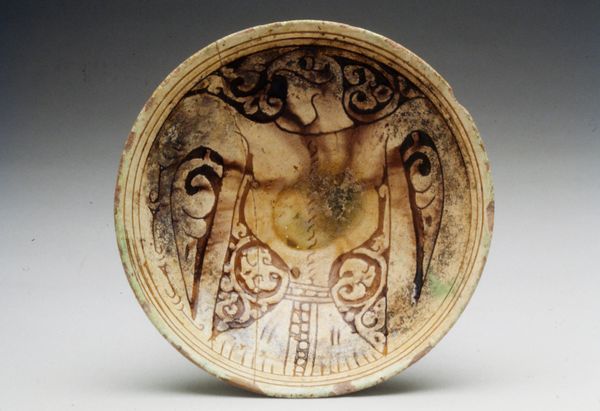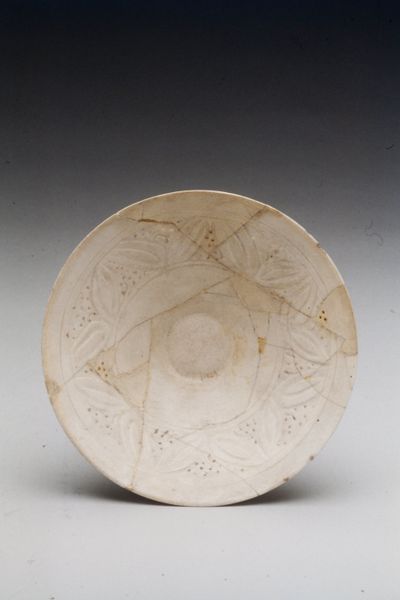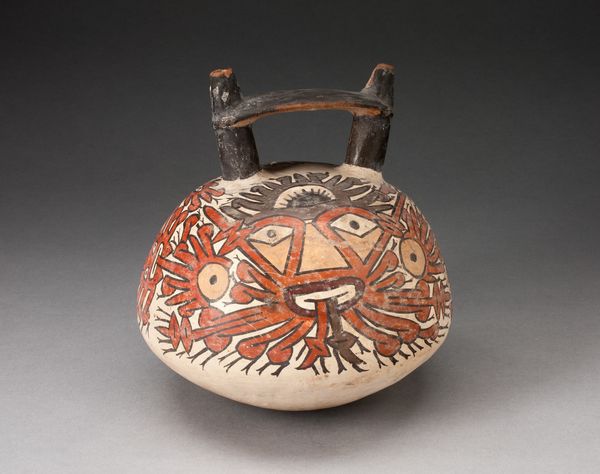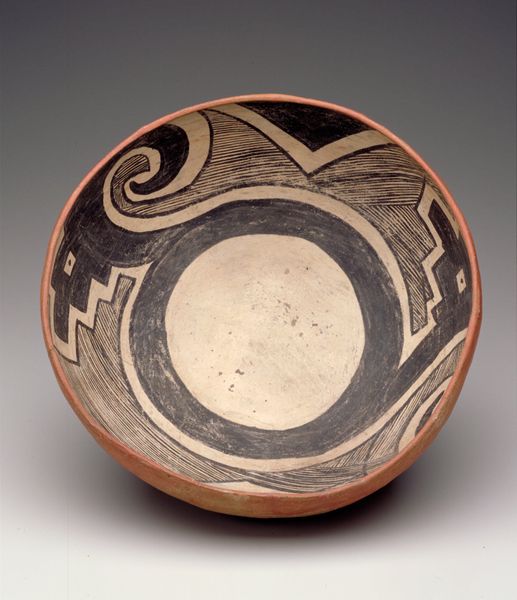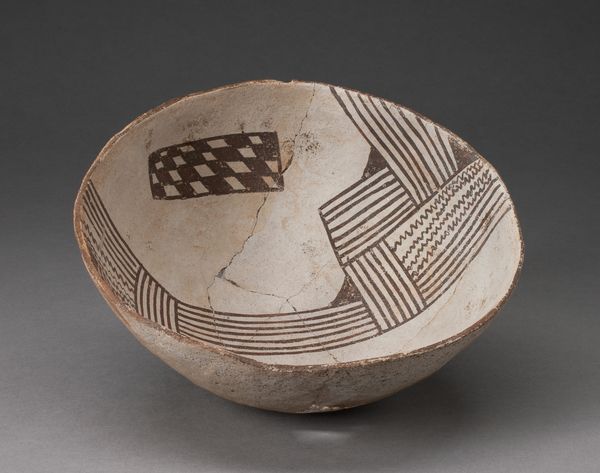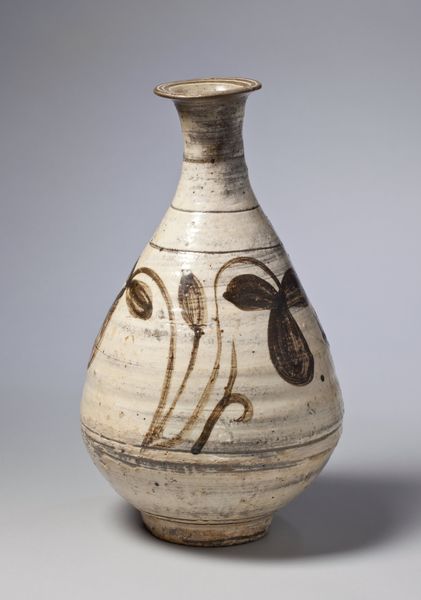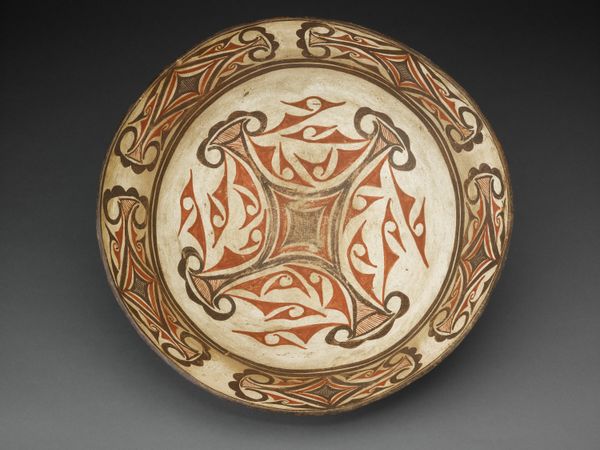
Bowl with abstract (Anthropomorphic-) design 9th-10th century
0:00
0:00
ceramic
#
ceramic
#
form
#
geometric
#
ceramic
#
abstraction
#
islamic-art
Dimensions: 2 1/8 x 8 in. (5.4 x 20.32 cm)
Copyright: Public Domain
Curator: Right, let’s take a closer look at this ceramic bowl adorned with an abstract design. It's dated to the 9th or 10th century and is part of the Minneapolis Institute of Art's collection. Notice anything striking about it at first glance? Editor: Well, immediately, it has this slightly eerie face staring back. Like a forest spirit caught in clay. A blend of the geometric and something organic… and dare I say, slightly judgmental? Curator: "Judgmental"—interesting. Let's consider its construction. The material is relatively simple, just earthenware, and it speaks to the prevalence and availability of clay as a core material culture across civilizations, especially within domestic settings. Notice the stark contrast between the pale backdrop and the dark pigment outlining what seems to be this stylized, anthropomorphic figure, hinting to its functional and decorative role in daily life. Editor: You know, seeing the "face," it sparks this vision of communal meals, the bowl sitting center stage, holding…well, I imagine something flavorful and spicy, given the sharp visual accents! I am particularly drawn to how the repeated leaf patterns create a sense of enclosure or even protection for this central "face," right? It reminds me that form follows function, sure, but it also holds a story. Curator: Absolutely, this dynamic highlights abstraction in Islamic art. You know, strict interpretations of religious text limited representational figuration and Islamic art then blossomed into geometric and abstract modes like the geometric patterns of these designs which could also function to transmit cultural narratives through visual form. This piece really questions those limitations and allows art production to evolve organically out of cultural context. Editor: Mmh, to know this bowl once felt the heat of a kiln and now holds space in a museum…there’s a quiet journey in that transition. Maybe "judgmental" was the wrong word… Perhaps its expression is better characterized as wise and all-knowing. Curator: Precisely! Its transition speaks to the endurance of crafted objects as cultural carriers that also have an exchange with us as they're looked at in time. Thanks for adding color to the description of the process that really brought this bowl from being raw materials into a work with rich history.
Comments
No comments
Be the first to comment and join the conversation on the ultimate creative platform.
